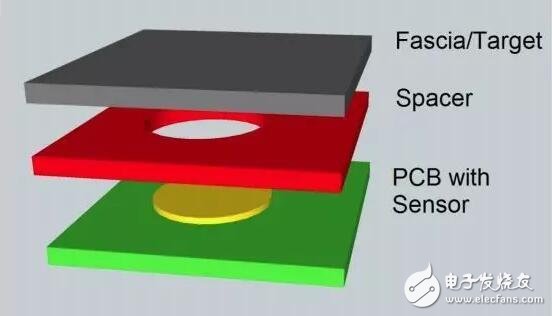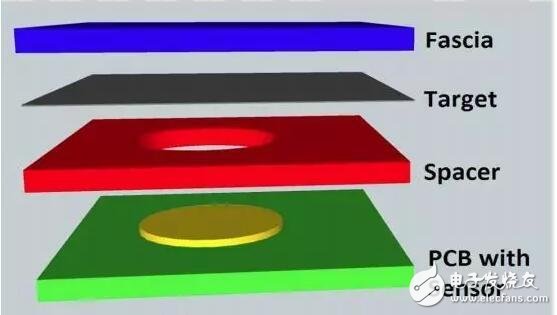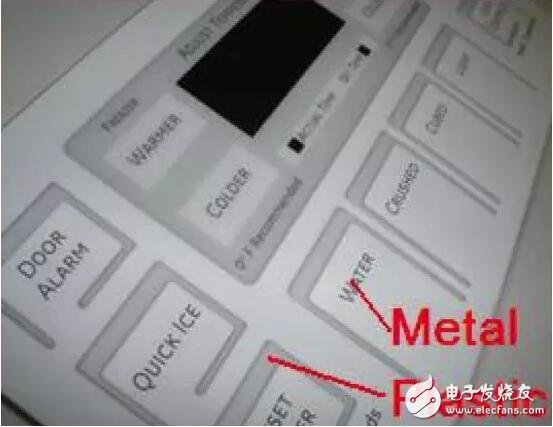One of the key advantages of metal panel capacitive (MoC) touch systems is the flexibility they offer in sensor design. This means that sensors can be configured in hundreds of different ways, allowing for a consistent look and feel across various deployment methods. Whether it's a single button or a complex array, MoC technology adapts seamlessly to the design needs of the application.
With so many design possibilities, it’s easy for designers to get overwhelmed unless they have a clear understanding of the available options and their trade-offs. To ensure a successful implementation, it’s advisable to consult with a mechanical engineer who has expertise in material selection, manufacturing processes, and how these elements affect performance. Their insights can help avoid common pitfalls and streamline the development process.
MoC systems are typically built using Microchip’s mTouch® capacitive sensing technology, which includes the necessary electronics and software. Unlike traditional capacitive sensors, MoC replaces the user’s finger with a conductive target layer positioned above the sensor through a thin spacer. When the user presses the target, it deforms slightly—by less than 10 micrometers—bringing it closer to the sensor. This change in distance alters the capacitance, which the system detects and interprets as a touch event.
This design offers several benefits. The sensor is electrically isolated from the environment, reducing noise, crosstalk, and interference. The grounded target layer also provides a safe path for electrostatic discharge (ESD), improving reliability. Additionally, the isolation makes the system more resistant to water and moisture, making it ideal for harsh environments. Since the system relies on physical force rather than electrical conductivity, it works well with gloves and even supports Braille applications.
The use of metal panels not only enhances durability but also gives the final product a premium appearance, making it suitable for high-end applications such as industrial controls, medical devices, and automotive interfaces.
Sensor System Construction
To build a MoC system, you need three main components: a standard capacitive sensor, a spacer layer, and a conductive target layer. The target layer acts as the second plate of the capacitor and must be flexible enough to return to its original shape after being pressed. Figure 1 shows a typical single-layer structure where the metal panel serves both as the visible surface and the conductive target.

Figure 1: Typical metal panel capacitive sensor stack structure (single layer)
The panel is placed on top of the laminate structure, often with printed markings or legends. The conductive target layer functions as another ground plane for the sensor, providing both mechanical resilience and the necessary capacitance for detection. The choice of materials for the panel and target layer depends on factors like the required actuation force, desired aesthetics, environmental conditions, and whether backlighting is needed.
In some cases, a single metal layer can serve as both the panel and the target. This simplifies the design and reduces costs. For example, a printed film can be applied to the metal surface to create visual elements, while the metal itself acts as the conductive layer. This configuration is ideal for applications requiring minimal complexity and cost-effective production.
The actuation force is influenced by the thickness, size, and elasticity of the metal used. Thicker materials generally require more force, while thinner ones are easier to press. The choice of material also affects long-term performance, especially under repeated use. Stainless steel offers good strength and corrosion resistance, while aluminum is lighter and more flexible but may be more prone to dents.
For aesthetic purposes, modern printing and coating techniques allow for realistic textures, such as wood grain or stone patterns. Metal surfaces can also be plated or anodized to create custom finishes, including photo-quality images. These features make MoC systems suitable for high-end consumer and industrial products.
Environmental factors like wear resistance and chemical resistance are critical, especially in industries like food processing or healthcare. Stainless steel is highly resistant to corrosion and chemicals, making it ideal for such environments. Anodized aluminum also performs well but requires additional sealing to prevent oxidation. In contrast, untreated metals may rust or degrade over time.
Many designers assume that metal panels cannot be backlit, but this is not true. With proper design, such as selective perforations and polymer fillers, backlighting is achievable without significantly increasing costs. This allows for visually appealing designs that maintain the functional benefits of metal.
Plastic Panel with Metal Cover
A common alternative is to use a plastic panel combined with a metal cover sheet as the target layer. This approach offers similar functionality to a single-metal design, with the added benefit of plastic’s flexibility and ease of customization. The plastic panel provides the necessary mechanical movement, while the metal cover acts as the other plate of the capacitor.

Figure 2: Example of a plastic sensor stack structure
This design allows for greater control over actuation force, as the plastic’s elasticity can be adjusted based on thickness and material properties. It also offers better resistance to bending and deformation compared to metal alone. However, the optical clarity of the plastic must be carefully considered, especially when backlighting is involved.
Plastics like polycarbonate and polyethylene are known for their excellent light transmission, making them ideal for backlit designs. Adhesives used in the construction must also be optically clear to avoid cloudiness or haze. Designers should select materials that maintain clarity and stability under varying temperatures and humidity levels.
Another consideration is the dimensional stability of the materials. If the expansion rates of the panel and bonded layers differ significantly, it could lead to adhesive failure, resulting in false triggers or reduced sensitivity. This is particularly important in environments with extreme temperature fluctuations.
In markets like food preparation and healthcare, antimicrobial coatings on plastics are essential to prevent microbial growth. Similarly, anti-fogging and UV-resistant materials are beneficial for outdoor or high-temperature applications.
Metal-Plastic Co-Molded Design
The third option combines both metal and plastic into a single panel and target layer. By etching or stamping the metal, space is left around the switch, which is then filled with injection-molded plastic. This hybrid approach leverages the strengths of both materials: the durability of metal and the optical and tactile properties of plastic.

Figure 3: Metal and plastic co-molded panels and target layers
This design offers a balanced actuation force, softer than pure metal but harder than pure plastic. The exact force can be fine-tuned by adjusting the ratio of metal to plastic used in each button. Software settings can also be modified to adjust the sensitivity and response of the system.
The appearance of co-molded designs is highly customizable. Metal adds a premium look, while plastic enables backlighting and detailed graphics. Modern screen printing and coating technologies allow for a wide range of visual effects, making it possible to achieve the desired aesthetic and functional requirements.
However, composite designs require careful attention to material compatibility. Mismatched thermal expansion coefficients can cause delamination, leading to performance issues. Adhesion between metal and plastic must be strong and stable under all operating conditions.
Backlighting in co-molded systems is achieved through the plastic portions, allowing for even illumination of the entire panel. This makes it easier to highlight buttons and improve usability, especially in low-light environments.
In Conclusion
With these diverse sensor design techniques, designers have the freedom to create innovative and aesthetically pleasing user interfaces. By combining materials, configurations, and advanced technologies, they can develop unique control systems that meet both functional and visual demands. However, these approaches are just the beginning. Designers are encouraged to think creatively, collaborate with specialized design firms, and explore new ideas to push the boundaries of what’s possible.
2. Power Output: The inverter's power output capacity should match the total power requirement of the appliances in your off-grid setup. This ensures that all necessary devices can be powered without overloading the system.
3. Protection Features: Advanced inverter models often include various protections such as over-voltage, under-voltage, over-current, and short-circuit protection. These safeguards help prevent damage to the inverter and connected devices.
4. Battery Management: Some off-grid inverters come equipped with battery management systems that monitor and control the charging and discharging of batteries, optimizing their life span and performance.
5. Communication Capabilities: Modern inverter models may offer Wifi or Bluetooth connectivity, allowing users to monitor system performance remotely through a smartphone app or online portal.
6. Versatility: Depending on the model, an off-grid inverter can support a range of renewable energy sources, including solar panels, wind turbines, and even small hydroelectric generators.
7. Compatibility: It's important to ensure that the inverter is compatible with the types of batteries you are using in your system, whether they are lead-acid, lithium-ion, or another type.
8. Regulation Standards: Look for inverter models that meet relevant safety and performance standards, such as UL, CE, or ISO certifications.
Choosing the right off-grid inverter depends on factors such as the size of your power needs, the layout of your property, and your budget. Consulting with a professional installer or a knowledgeable salesperson can help ensure that you select an inverter that perfectly suits your off-grid power system requirements.
Off Grid Solar Inverter,Invertor Off Grid,Invertor Solar Off Grid,Off Grid Hybrid Inverter
Ningbo Taiye Technology Co., Ltd. , https://www.tysolarpower.com